Are you ready for a fascinating journey through the world of Montana moths?
I’ve got your back! In this comprehensive guide, I’m going to walk you through everything you need to know about these incredible creatures, from their enchanting life cycles to their captivating color patterns.
Now, I know what you might be thinking: why moths? Well, not only are they a vital part of our ecosystem, but their intricate beauty and unique habits are simply mind-boggling.
From the elusive White-lined Sphinx Moth to the Polyphemus Moth, Montana is home to an array of fascinating species that will leave you awestruck.
- Related article: Insect Season in Montana
Whether you’re a beginner or a seasoned moth enthusiast, this guide has got you covered.
Are you ready to delve into the captivating world of Montana moths? Get ready to be amazed, because these mesmerizing creatures are about to take your breath away!
A Closer Look at Moths
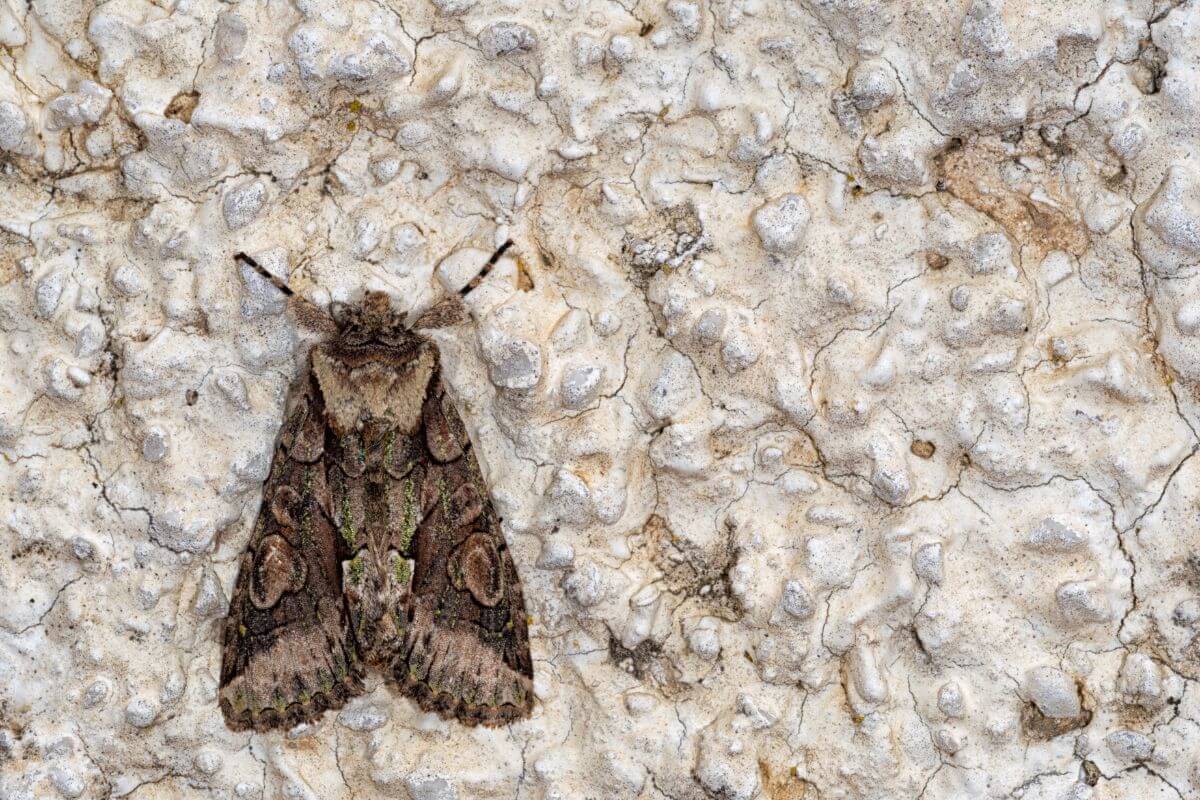
Moths and butterflies are closely related and share a common classification within the order Lepidoptera.
They are often grouped because they share many biological and morphological features, despite the differences in appearance and behavior between moths and butterflies.
In early summer, Montana hosts various moth sightings, including the striking White-lined Sphinx Moth with its pink stripes and the Achemon Sphinx Moth, known for its prominent eyespot.
Many of these moths can be found in gardens. The army cutworm moth, which is the caterpillar stage of the miller moth and is infamous as a pest, is commonly seen in garages and homes from July to August.
On the plus side, moths also play a crucial role as pollinators, flitting from flower to flower and allowing plants to fertilize and reproduce.
The most common moths in Montana are the White-lined Sphinx Moth, army cutworm moth, and Achemon Sphinx Moth.
The largest moths in the state are the Polyphemus Moth, White-lined Sphinx Moth, and Great Ash Sphinx Moth.
When it comes to conservation efforts, it is crucial to protect moths by understanding their habits and habitats, reducing light pollution, and promoting native plants.
The survival of these creatures is essential, as it signifies the preservation of countless other species.
Montana Moths by Family
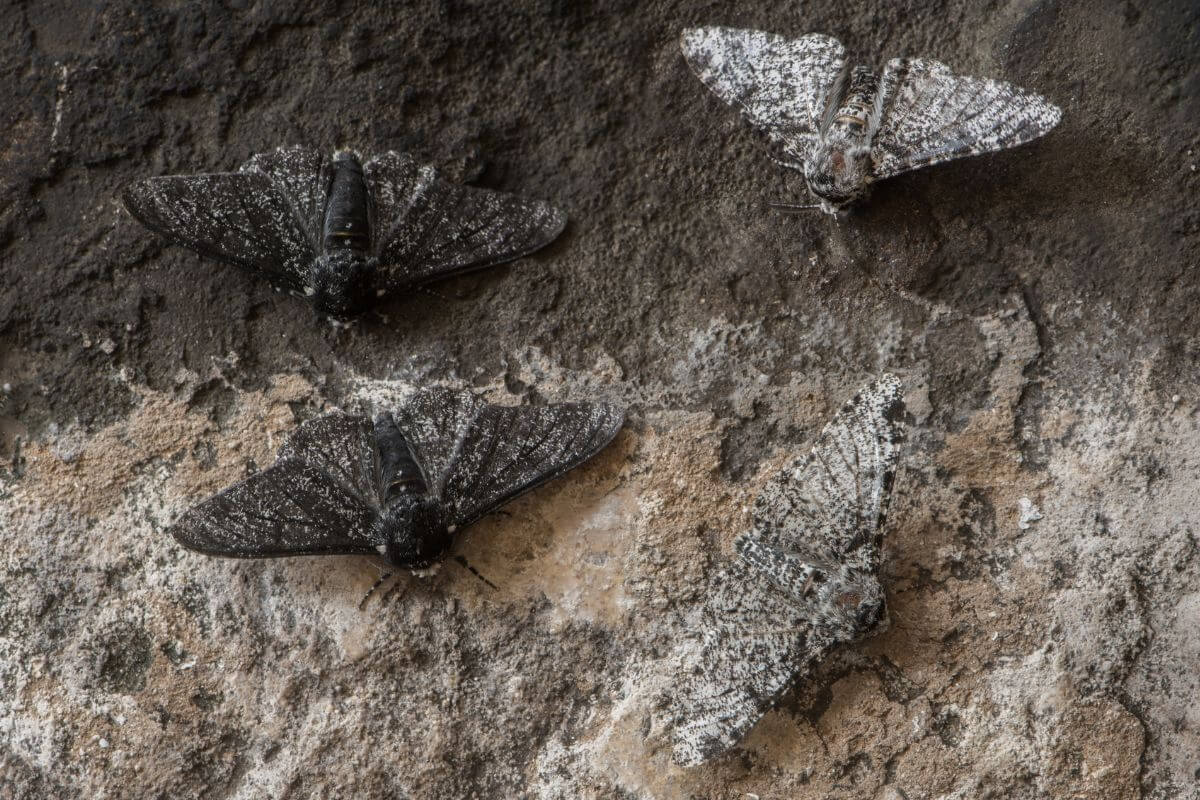
Get ready for an unforgettable learning experience as we explore the captivating world of Montana moths, one family at a time.
We’ll start with the mighty Sphingidae family headlined by the White-lined Sphinx Moth and the enchanting Small-eyed Sphinx Moth. We’ll then move on to the fascinating Erebidae family, featuring the Forage Looper Moth.
But that’s just the tip of the iceberg as we unravel the mysteries of Big Sky Country’s moths by family. It’s a journey you won’t want to miss!
1. Sphingdae Moths
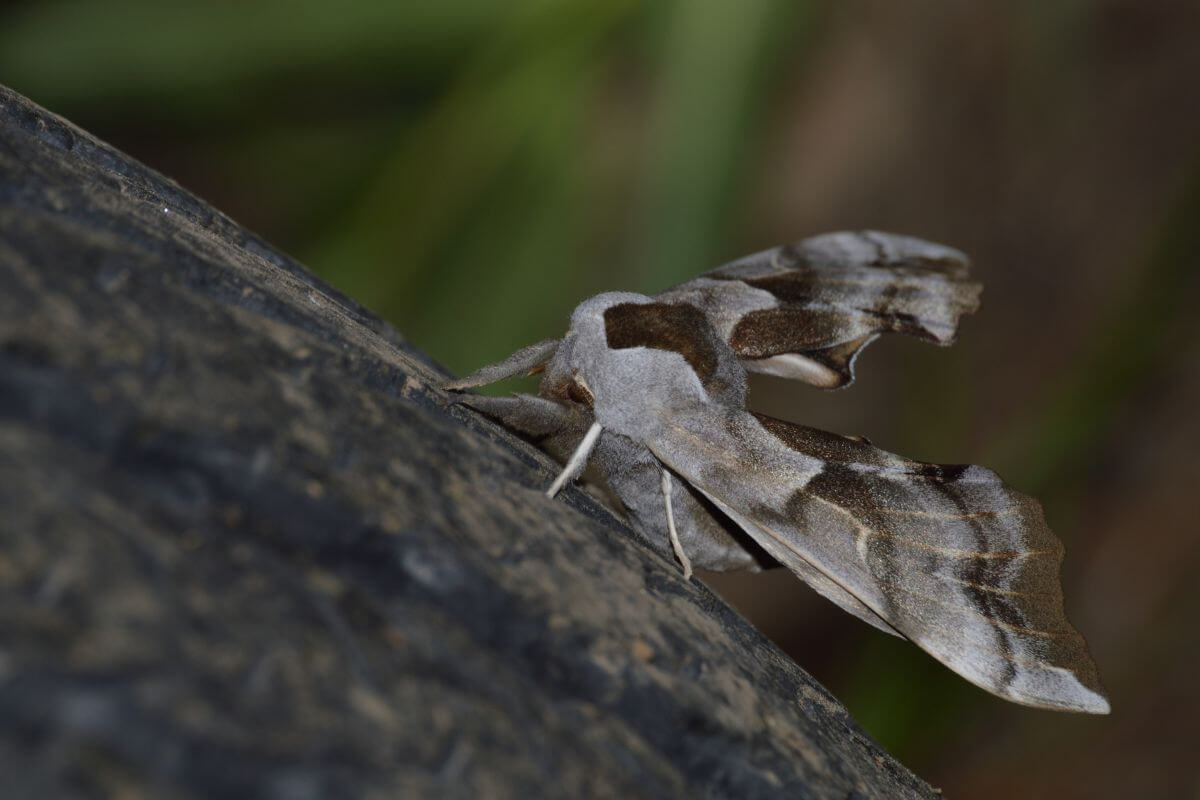
When it comes to magnificent moths, Sphingdae moths or hawk moths are hard to beat. These awe-inspiring creatures belong to the Lepidoptera order and the Sphingidae family.
With their streamlined bodies, long narrow forewings, and smaller hind wings, they are truly a sight to behold.
One of the most fascinating aspects of hawk moths is their incredible flying abilities. Not only can they hover effortlessly, but they can also reach astonishing speeds.
They have been recorded flying at a breathtaking 32.86 miles/h, making them one of the fastest insects on the planet.
Sometimes referred to as sphinx moths or hummingbird moths, these majestic creatures are a common sight in Montana.
Some of the different species of Sphingdae moths you can find in Montana include, but are not limited to:
- Achemon Sphinx Moth (Eumorpha achemon)
- Blinded Sphinx Moth (Paonias excaecatus)
- Elm Sphinx Moth (Ceratomia amyntor)
- Big Poplar Sphinx Moth (Pachysphinx occidentalis)
- Clark’s Sphinx Moth (Proserpinus clarkiae)
- Galium Sphinx Moth (Hyles gallii)
- Elegant Sphinx Moth (Sphinx perelegans)
- Great Ash Sphinx Moth (Sphinx chersis)
- Juanita Sphinx Moth (Proserpinus juanita)
- One-eyed Sphinx Moth (Smerinthus cerisyi)
These diverse species of hawk moths add a touch of enchantment to the Montana wilderness.
Whether you’re exploring the forests, meadows, or even your backyard, keep an eye out for these captivating creatures. They are sure to leave you in awe of nature’s beauty.
2. Erebidae Moths
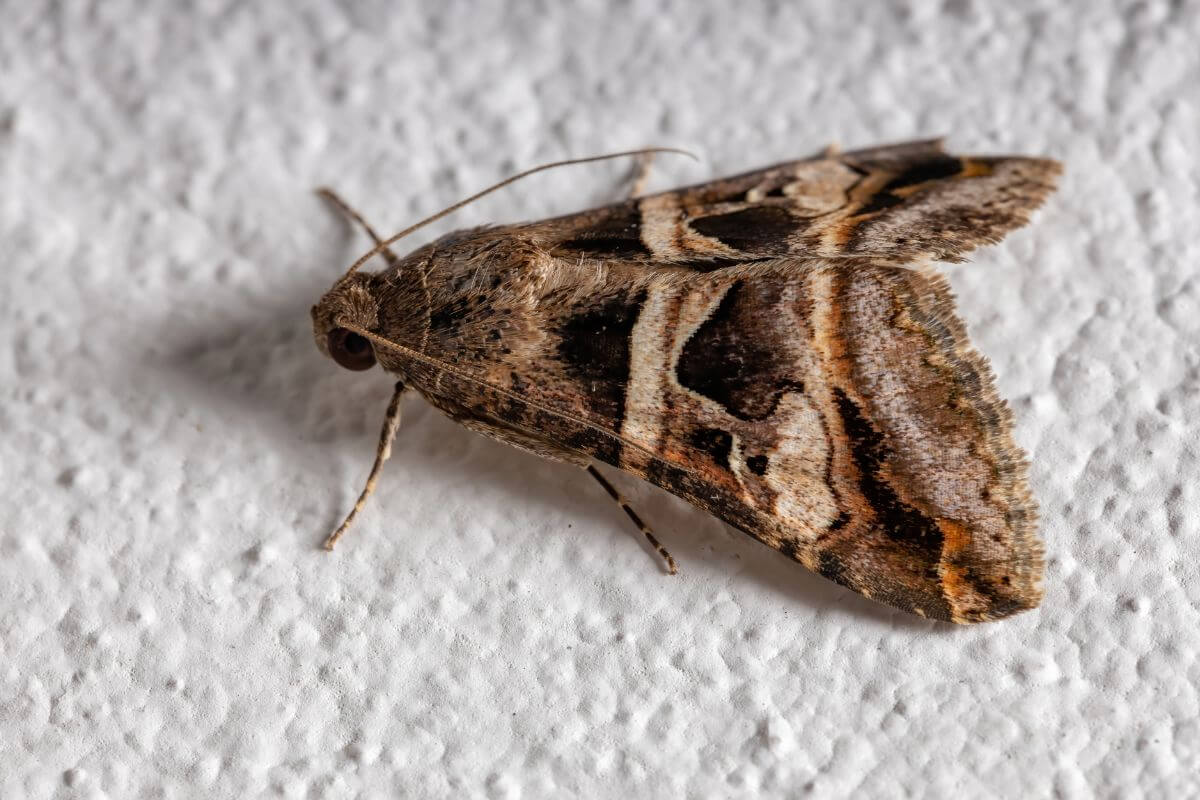
When it comes to the fascinating world of moths, the Erebidae family is known for its diverse and intriguing species.
These moths, also known as “semi-loopers,” have adapted to an arboreal lifestyle, making them a fascinating group to study. With some species showcasing a reduction or loss of prolegs on certain abdominal segments, they have a distinctive appearance.
What sets the Erebidae family apart is their diverse caterpillar morphology.
While some species have a relatively smooth appearance when mature, others, such as tiger moths and tussock moths, are notably hairy and bristly.
Their larvae or caterpillars also possess a unique defense mechanism – they can acquire poisonous chemicals from their food plants, providing them with protection from potential predators.
One striking feature of many Erebidae larvae is their heavy armor of urticating (stinging) and barbed setae (hairs). These serve as both protection and a deterrent, keeping predators at bay.
Here’s a closer look at some of the Erebidae moths you can find in Montana:
- Forage Looper Moth (Caenurgina erechtea)
- American Idia Moth (Idia americalis)
- Nevada Tiger Moth (Grammia nevadensis)
- Spotted Tussock Moth (Lophocampa maculata)
- Black Rimmed Prominent Moth (Odontosia elegans)
These species add to the vibrant tapestry of the state’s rich wildlife. Their unique features and behavior are sure to leave you captivated and filled with wonder.
3. Noctuidae Moths
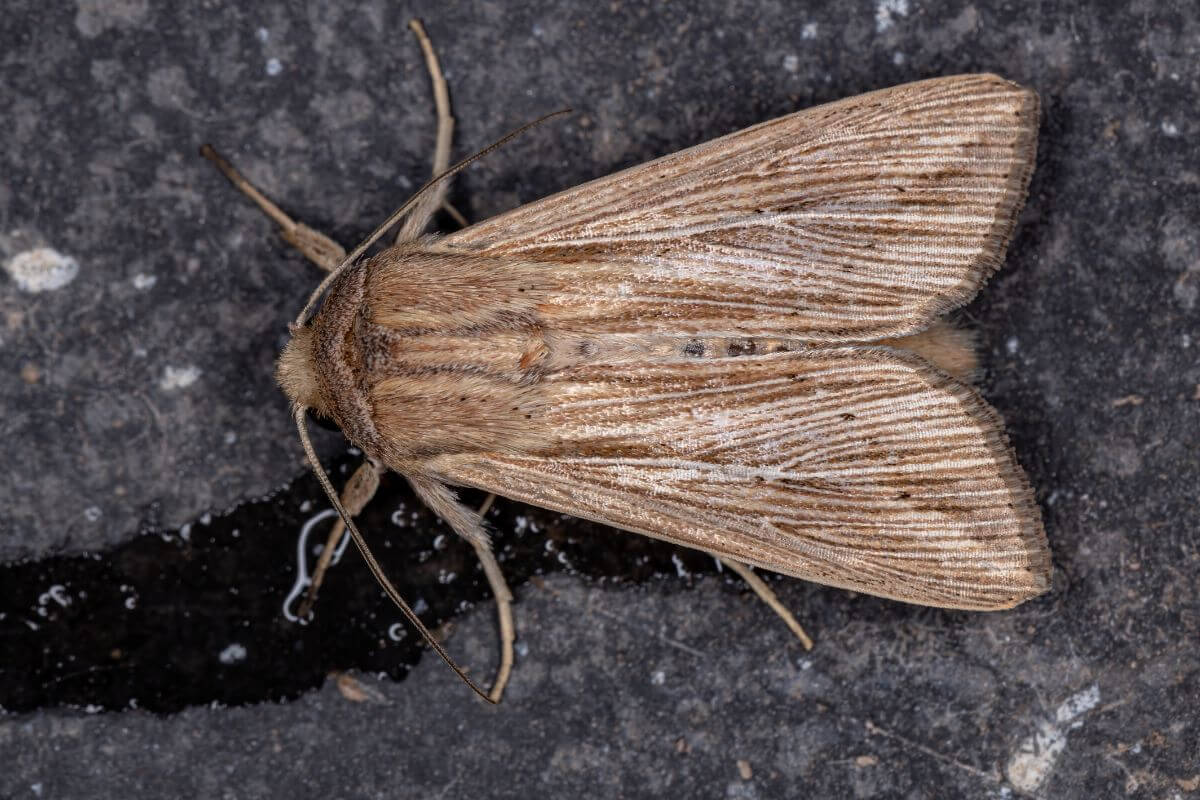
Another group of moths that has caught our attention is the Noctuidae moths, belonging to the family owlet moths. 4
These small and unassuming creatures may not draw immediate attention, but their unique characteristics make them a fascinating subject of study.
With a wingspan of just 2.5 to 2.7 cm, owlet moths are not the largest of their kind, but what they lack in size, they make up for in charm.
Their dark red-brown or yellowish-brown color, accompanied by a striking black basal streak, adds to their subtle allure.
The forewing showcases a delightful play of colors, with a dark tan hue transitioning into slightly lighter gray on the costa, and then turning into a richer gray-brown near the posterior and outer margins.
When observing these moths up close, you’ll notice that their head and thorax are of a gray-tan shade, while the male antenna takes on a bead-like appearance.
However, it’s the combination of the owlet moths’ small size, robust build, red-brown color, and contrasting white cubital vein that truly makes them stand out in the vast moth realm.
When it comes to spotting owlet moths in Montana, timing is everything.
Their flight season typically spans from the first week of August to the fourth week of September, offering a limited window to catch a glimpse of these enchanting creatures in action.
Here are a few notable members of the Noctuidae family that you may encounter during your Montana adventure:
- Dingy Cutworm Moth (Feltia jaculifera)
- Great Black-letter Dart Moth (Xestia dolosa)
- Yellow Headed Cutworm (Apamea amputatrix)
- Army Cutworm Moth (Euxoa auxiliaries)
Each species brings its unique characteristics and adds to the diverse tapestry of Big Sky Country’s moth population.
Keep an eye out for these fascinating owlet moths during your exploration of Montana’s natural wonders.
4. Geometridae Moths
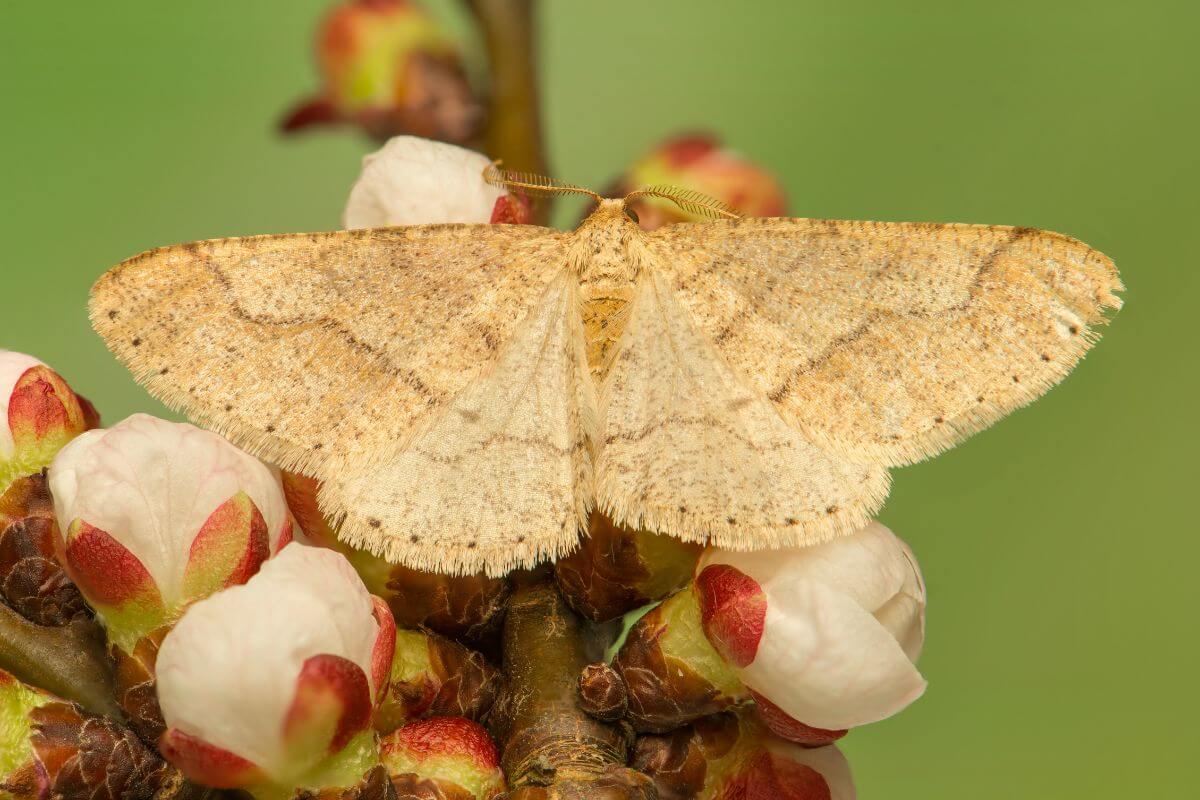
Montana is also home to the enchanting moths of the Geometridae family, commonly referred to as geometer moths or inchworm moths.
The defining characteristic of these moths lies in their caterpillars, whose peculiar movement has been likened to that of an inchworm.
When it comes to their adult counterparts, Geometer moths offer an array of surprises. With wingspans measuring around 1 ½ inches (3.81 cm), their delicate appearance belies their intricate beauty.
The females, slightly larger, flaunt wings that are more rounded compared to the males.
From earthy tones to vibrant hues, these moths also showcase a stunning variety of colors.
Be on the lookout for these Geometridae moths when you make the trip to Montana:
- Peppered Moth (Biston betularia)
- Inchworm Moth (Geometridae)
- Winter Moth (Operophtera brumata)
- Scarlet-bodied Moth (Lycia ypsilon)
- White-pinion Spotted Moth (Lomographa bimaculata)
Spotting an adult geometer moth can be quite the challenge, as their ability to blend into their surroundings is truly remarkable.
But once your gaze settles on these elusive creatures, their hidden splendor will shine amid the foliage.
5. Saturniidae Moths
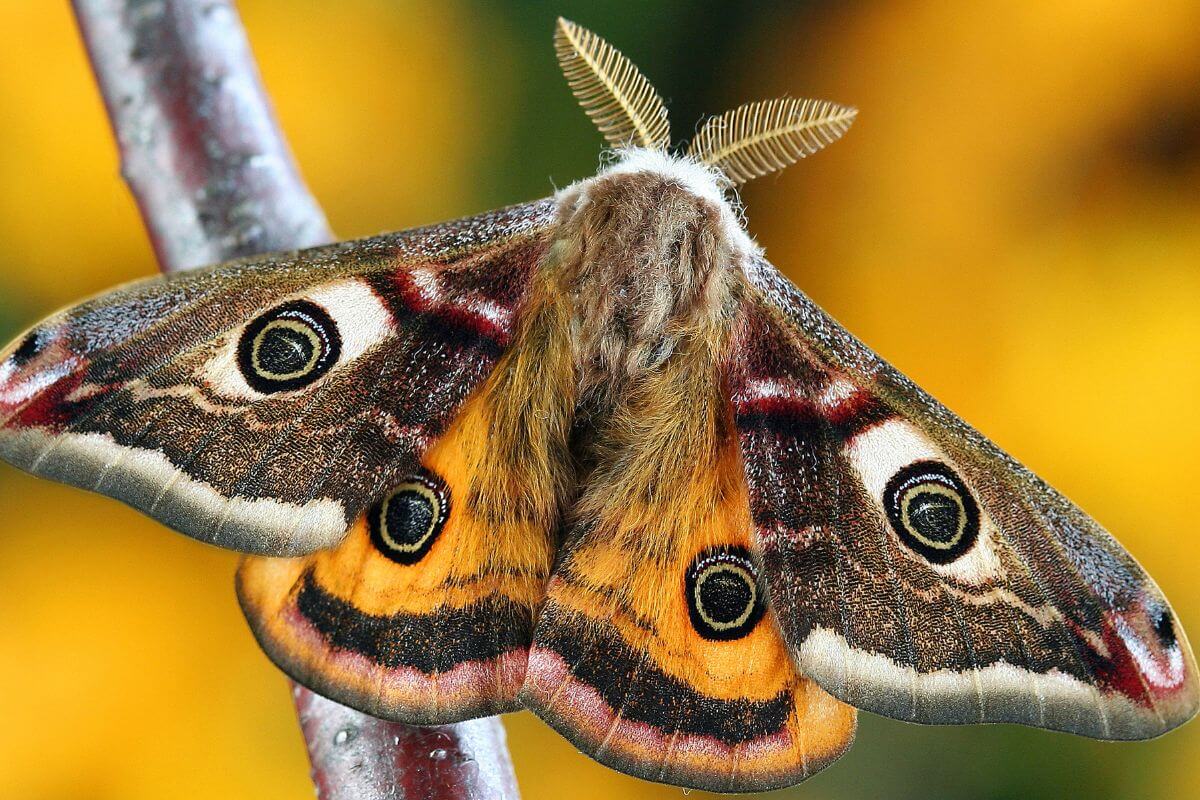
The Saturniidae family of moths or Saturniid moths, is a fascinating group of moths in Montana’s insect world.
Their large size, striking colors, and attractive shapes make them impossible to ignore, even for those who aren’t particularly interested in entomology.
Among them are giant silk moths, with their most remarkable aspect being their caterpillar stage. These creatures can be large and quite spectacular, adorned with spines and barbed horns.
While they may appear intimidating, the truth is that giant silk moth caterpillars are generally harmless to humans.
However, it’s important to note that a particular Saturniid, the Io moth (Automeris io) caterpillar, can deliver a painful sting if mishandled.
Here’s a breakdown of the two notable species of Saturniid moths found in Montana:
| Key Information | Polyphemus Moth | Cecropia Moth |
| Wingspan | 4 to 4 ½ inches (10.2 to 11.4 cm) | Approximately 4 inches (10.2 cm) |
| Color | Tan or reddish brown | Reddish brown |
| Outer Wing Margins | Lighter with bluish and pink lines | Parallel light and dark lines |
| Host Plants | Oak, Apple, Alder, Elm, Cherry, Madrone, Plum, Willow, and more | Lilac, Maples, Willows |
| Other Important Features | Circular eyespots on wings, caterpillars spin large cocoons, single generation per year, cocoon attached to branches with silk threads, adults emerge in spring, mate, and lay eggs, not considered a pest | Light-colored, comma-like markings on wings, large, green caterpillar with spiny knobs, similar biology and life cycle to Polyphemus, pot a significant pest problem |
Montana’s giant silk moths, with their magnificent size and exquisite colors, are a sight to behold.
Keep an eye out for the Polyphemus Moth and the Cecropia Moth as you wander about the Treasure State.
Montana Moth Final Thoughts
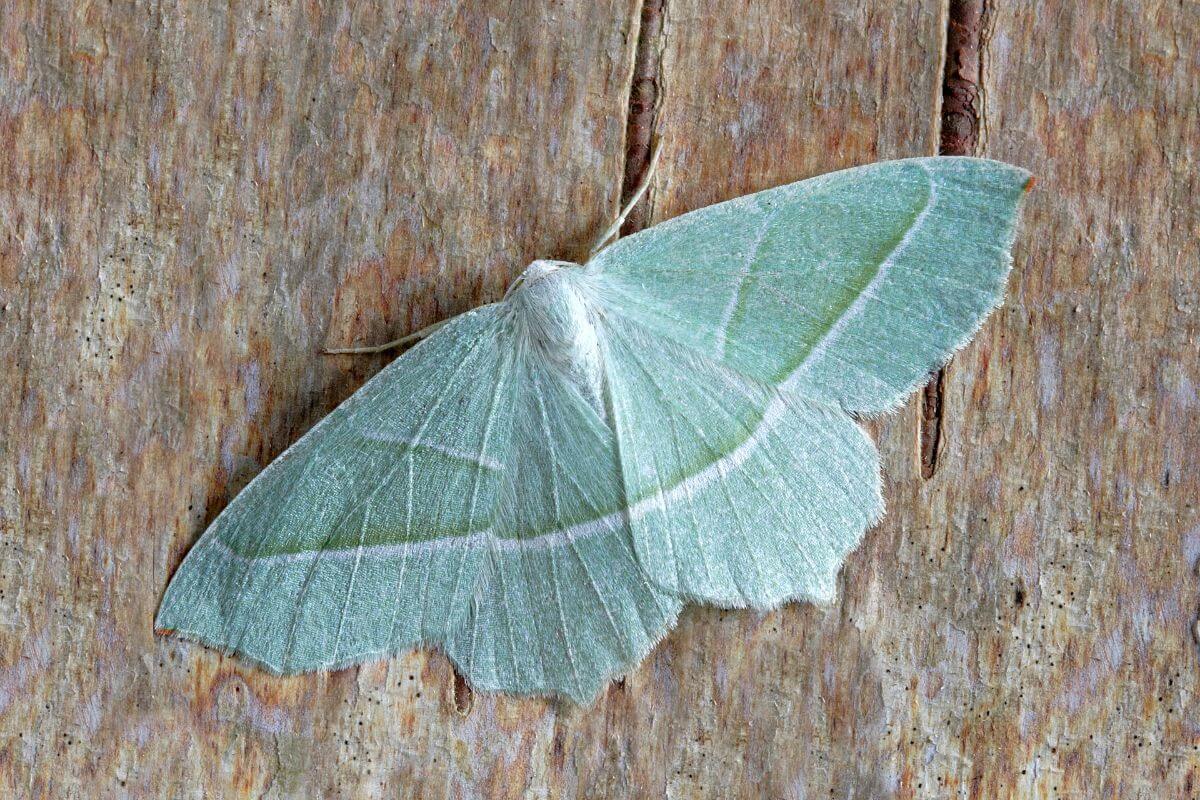
From the hawk moths of the Sphingidae family to the giant silk moths of the Saturniidae family, Montana’s landscape is home to a variety of moth species.
Not only are these moths visually stunning, but they also play a crucial role as pollinators, ensuring the survival of many plant species.
We must also acknowledge that moths are not immune to predators. Birds, bats, and even other insects can view these intricate creatures as a delectable meal.
That being said, this cycle is crucial for maintaining a balanced ecosystem.
Looking ahead, let’s strive to protect and conserve these fascinating and delicate creatures.
Understanding moth habitats, promoting native plants, and reducing light pollution are just a few steps we can take to preserve the delicate balance of Montana’s moth populations.
Through our actions, we can ensure their continued existence and admire their beauty for generations to come.
Montana Moth FAQs
1. What Are the Most Common Moths in Montana?
The White-lined Sphinx Moth, army cutworm moth, and Achemon Sphinx Moth are the three most common species of moth in Montana.
2. What Is Considered the Most Beautiful Moth in the World?
Beauty is subjective, and opinions on what constitutes the most beautiful moth in the world can vary widely. However, one species often cited for its beauty is the Atlas Moth (Attacus atlas).
This large moth, native to Southeast Asia, is known for its stunning wing patterns and colors, including shades of red, brown, and purple, as well as intricate, eye-catching markings.
3. Which Moth Is Known for Being the Most Aggressive?
While several moths can pose a threat to textiles and animal specimens, the common clothes moth, or Tineola bisselliella, deserves special mention as one of the most voracious culprits worldwide.
Measuring a mere 5 to 8 mm in length, these tiny creatures are expert crawlers.
Their pervasive presence and insatiable appetite have earned them the reputation of being the most aggressive moth species.
4. During Which Season Are Moths Most Active?
Moths can exhibit activity year-round, but a considerable portion of moth species are particularly active during the spring and summer seasons.
5. Are Moths a Problem in Montana?
Yes, moths can be a concern in Montana, particularly during the summer season.
The increase in moisture during the season leads to a rise in their numbers, and two types of cutworms, which eventually become moths, are prevalent in the region.
These moths can be attracted to lights in homes, posing a challenge for residents.
Discover a wealth of information about Montana through these captivating articles:
- https://fieldguide.mt.gov/displaySpecies.aspx?family=Sphingidae
- https://hea-www.harvard.edu/~fine/CFA/hawkmoth.html
- https://mnfi.anr.msu.edu/species/description/365009/Hypocoena-basistriga
- https://uwm.edu/field-station/three-striped-moths/
- https://s3.wp.wsu.edu/uploads/sites/408/2015/02/PLS-57-Silkworm-Moths.pdf
- https://entomology.ca.uky.edu/files/ef008.pdf

